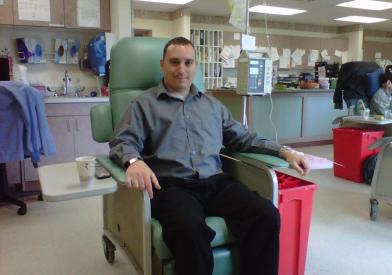What Is Multiple Myeloma?
Multiple myeloma is a cancer of the bone marrow involving plasma cells, which are mature lymphocytes that produce antibodies. Abnormal plasma cells (myeloma cells) build up in the bone marrow and can lead to a number of different clinical manifestations, including bone lesions or fractures, decrease in blood counts such as anemia, and impairment in kidney function.
As a result of the availability of new and more effective drugs for the treatment of multiple myeloma, the prognosis of people diagnosed with this condition has improved significantly in recent years. Many patients are able to lead active lives for long periods with relatively few symptoms associated with their disease.
Incidence
In the United States, about four people per 100,000 are diagnosed with multiple myeloma each year.
Growth and Spread
Genetic abnormalities in the myeloma cells are one of the strongest predictors of tumor aggressiveness. Because of this, if you are newly diagnosed, you will be classified as having high or standard risk, based on your tumor genetics.
In rare cases, multiple myeloma can cause a condition called amyloidosis. Antibody proteins build up and may bind together and collect in organs, such as the kidney and heart. This can cause the organs to become stiff and unable to work the way they should.
Risk Factors
As in other forms of cancer, the underlying cause of multiple myeloma is related to a series of genetic abnormalities, though not ones that are necessarily hereditary. Rather, in most cases, these genetic abnormalities are acquired at some point in the patient's life.
A small percentage (5 percent or less) of patients have immediate or first-degree family members who are affected by the disease.
Exposure to certain chemicals, such as benzene, Agent Orange, industrial-strength pesticides, and high-dose radiation are environmental risk factors for the development of multiple myeloma.
PROMISE is a research study led by Dr. Irene Ghobrial to identify, screen, and monitor individuals at high risk of developing multiple myeloma. This includes individuals ages 30-75 years who are African American and/or individuals with a first-degree relative with a plasma cell disorder such as multiple myeloma.
Symptoms and Signs
Symptoms that can occur in association with multiple myeloma include fatigue, musculoskeletal pain, frequent infections (especially upper respiratory infections), and unintentional weight loss.
Precancerous Conditions
Multiple myeloma is often preceded by what are called precursor conditions, which include:
- Monoclonal Gammopathy of Undetermined Significance (MGUS): In this condition, there are a small number of abnormal plasma cells in the bone marrow that occupy less than 10 percent of the overall bone marrow cells. There are no symptoms and no organ dysfunction, such as a decrease in blood counts or kidney impairment. MGUS is usually detected through routine blood tests. The condition typically remains stable over many years. Periodic assessments are performed to ensure there is no evidence of progression to multiple myeloma or other blood cancers, such as lymphoma.
- Smoldering Multiple Myeloma (SMM): In this condition, there is a greater degree of bone marrow involvement than in MGUS, with more than 10 percent of the overall bone marrow cells comprised of abnormal plasma cells. As in MGUS, there are no symptoms associated with SMM and no organ dysfunction, such as a decrease in blood counts or kidney impairment. SMM is also usually detected through routine blood tests. People with SMM are monitored by their physician for progression to multiple myeloma.
Our Center for Early Detection and Interception of Blood Cancers (formerly the Center for Prevention of Progression) cares for patients diagnosed with – or at high risk for – precursor conditions of multiple myeloma such as MGUS and smoldering myeloma. The clinic works with patients to manage their risk of disease progression and offers clinical trials of early intervention therapies to prevent disease progression.





